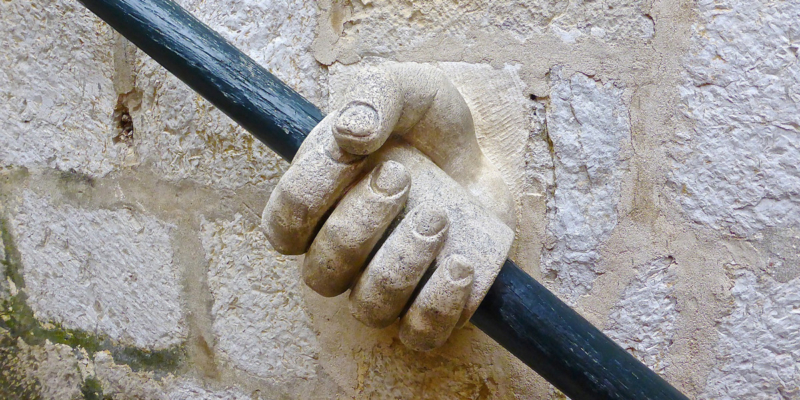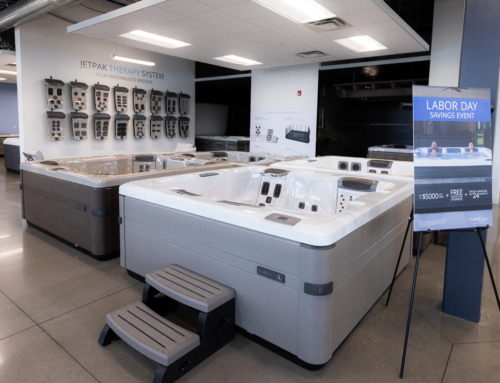For most retailers, upselling is the difference between keeping a spa business afloat and letting it flourish. However, whether out of pride or inexperience, some business owners fail to appreciate the value of margins. Today, we explore the basics of upselling, including simple strategies to refocus your efforts toward increasing your profit margins.
Margins Make the Difference
How does a spa dealer who sells 500 hot tubs each year profit more than one who sells 1,000? The answer is profit margins. Margins are the ratio between cost and revenue and are unaffected by the number of units sold. When retailers focus too heavily on moving base model, big ticket items and neglect the higher profit margins of small accessories and upgrades, they could actually be hurting their business despite high sales numbers.
When you train your sales staff to upsell accessories and services around the customer’s initial hot tub purchase, you can add 8-12% to your bottom line.
David Wood at Spa Retailer points out that when you “train your sales staff to upsell accessories and services around the customer’s initial hot tub purchase, [you can] add 8-12% to your bottom line.” That’s a significant increase, one which holding the course cannot achieve. As a business owner, you need to identify the products that perform the best, not only in units sold, but in profit gained. These will be your target upsells.
Upselling 101
As a profit-boosting strategy, upselling is one of the best there is. However, in order to be successful, you need to know how to entice your customers without being overly aggressive. In other words, you want to your customers to spend without feeling like they’ve been pressured into the sale.
To begin, you need to identify the high-margin items in your store. Typically, these are accessories or base-model upgrades that kick up the ticket price. In terms of dollar amounts, these items are not particularly expensive. However, in terms of profit, these products can net a 40-60% margin. And unlike big-ticket items, these small accessories come at little to no expense, meaning every additional unit sold equates to more money in the bank.
Before getting into specifics of upselling, you need understand how to tap into the psychology of the consumer. In order to do this, you must first gather information about your customers. What are they in the market for? What are they willing to spend? What products would be useful to them? In answering these questions, your sales team can push high-margin products and services to the individual customer.
Strategy #1: Mention Early and Often
According to Tom Masson of Oasis Hot Tub & Sauna in Nashua, New Hampshire, upselling begins early in the sales process. “The key is to mention early and often,” he explains. “Once you ask pre-qualifying questions and learn about your customer, you’ll have a good idea of what accessories they’d be interested in.” If a customer is looking to purchase a new hot tub, tell them about the kinds of chemicals they’ll need, the maintenance requirements, and the products that will give the customer more enjoyment out of their new spa.
Ultimately, you want your customers to perceive your high-margin items as necessities rather than accessories. The more you work accessories into your overall sales pitch, the more essential they seem. However, you’ll also discover this tactic doesn’t work for all items. For example, luxury add-ons such as umbrellas, sound systems, and decorative elements are harder to pitch than, say, covers or handrails. To move these items, a package deal is more effective.
When you offer package prices for your premium spa models, you lower the perceived costs of the included accessories.
When you want to increase your profit margins, you need to sell more than base-model hot tubs. Unfortunately, it’s hard to sell spa upgrades à la carte. However, package deals soften the blow. When you offer package prices for your premium spa models, you lower the perceived costs of the included accessories. Consumers don’t feel like they’re being upsold when they’re getting a better deal, despite ultimately spending more.
Strategy #2: Put Accessories on Display
To adopt an old adage, a display is worth a thousand sales pitches. Instead of investing the energy in upselling accessories, let your products speak for themselves. Put high-end accessories, like stereos and lighting arrays, and premium spa models on display. Once customers see the products and their potential, they are more likely to ask about them.
In his store, Tom Masson has “several [cover lifters and stereos] on display in the showroom so sales members can show and compare quality.” However, he also emphasizes the importance of a knowledgeable sales team. “It’s important that the sales staff really know how to use the accessories.” Once a display catches the eye of a customer, the upsell becomes more informative rather than salesy. With interest already piqued, your salesperson can focus on the qualities of the product instead of why the customer needs it.
Finally, Masson adds, “Often the best ways to upsell in-store is to allow the customer to demo one of the accessories before you even start to sell it.” This allows the customer to assess its value without interference. When customers feel uninfluenced in their purchasing decisions, they are more likely spend on their own volition.
Strategy #3: Service Call Upsell
Never underestimate the potential of a service team with sales training. To maximize your profit margin, think of your service department as your door-to-door salespeople. Service call upsells are especially effective because they target established clients. Even better, most customers do not perceive service technicians as salespeople, but rather as experts. This means customers are more likely to heed their advice, especially when it comes to maximizing the value and longevity of their spas.
Customers are more likely to heed the service tech's advice, especially when it comes to maximizing the value and longevity of their spas.
You should train your service department in a few basic sales practices and inform them about special promotions and package deals happening in the showroom. When they’re out on a call, they can introduce customers to the idea of replacing their old spas with newer models with better energy efficiency, improved longevity, and lower maintenance costs. While you may not land a sale right then and there, you’ve planted the seed in the minds of consumers.
Strategy #4: Let the Customers Sell to Themselves
Some of the most effective salespeople are the customers themselves. No matter how much you pitch product benefits or discounts, the customer needs to convince his or herself before deciding to purchased. When the customer finds a need for an accessory or upgrade, they use that judgment as a means to justify spending more.
There are ways to encourage this behavior. First, you can introduce potential problems spa owners face down the road, such as winter storage or cleaning. If successful, the customer will want to address the issue on the spot, adding, for example, a cover lift or automated cleaner to their spa purchase. This approach involves upselling after the original big-ticket purchase. After a large purchase, accessories seem less expensive by comparison. For instance, after spending $2,500 on a base model, adding on a $100 jet upgrade seems relatively inexpensive to the customer.
In implementing a few or all of these practices into your sales process, you can move the items that make you the most money. With higher profit margins, you can offset other expenses, which can lead to better incentives and more sales traffic. If you’ve avoided upselling in the past, it’s time to swallow your pride and push those add-ons!









Leave A Comment